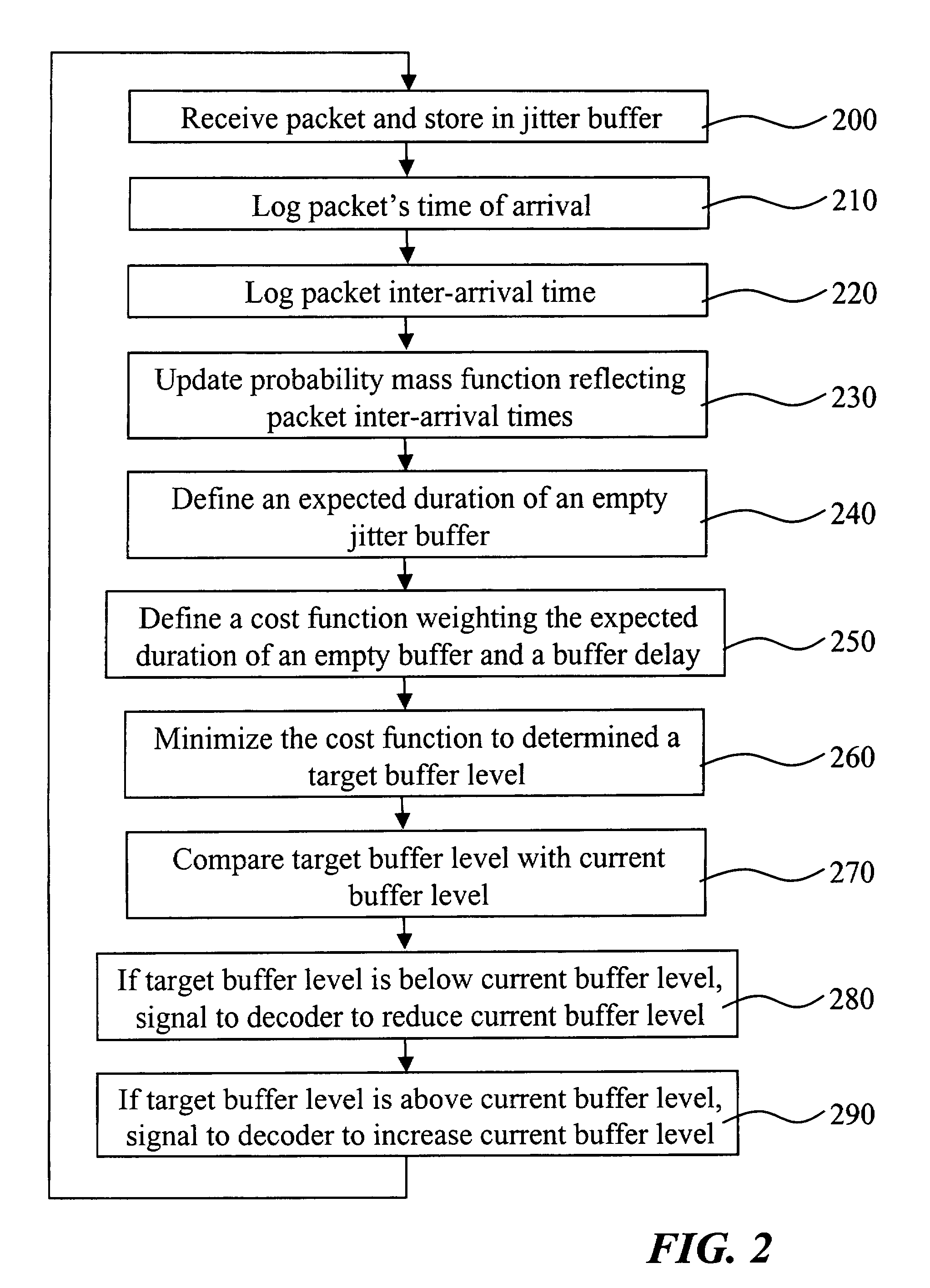Method and receiver for determining a jitter buffer level
a buffer level and receiver technology, applied in the field of data packet reception, can solve the problems of data packet delay, data packet delay, and large delay of data packet transfer by the network, and achieve the effect of minimizing the cost function
- Summary
- Abstract
- Description
- Claims
- Application Information
AI Technical Summary
Benefits of technology
Problems solved by technology
Method used
Image
Examples
Embodiment Construction
[0018]With reference to FIG. 1, an exemplified system is disclosed in which an embodiment of the inventive receiver is included and configured to operate. The transmitting end includes an audio source 110 and an encoder 120 for encoding and packetizing the audio for transmission as packet data over a packet data network 130, here indicated as an Internet Protocol network. The receiving end includes a receiver 135 and an audio destination 140. The receiver 135 includes a jitter buffer 150, a decoder 160, an audio buffer 170 and control logic means 180. The control logic means 180 exchange signaling information with the jitter buffer and is also responsible for signaling to the decoder 160 and the audio buffer 170. The present invention is concerned with the jitter buffer 150 and the control logic means 180 of the receiver 135. The decoder 160 is at least in part controlled by the control logic means, as will be described below. However, the decoder 160 itself and its operations does ...
PUM
 Login to View More
Login to View More Abstract
Description
Claims
Application Information
 Login to View More
Login to View More - R&D
- Intellectual Property
- Life Sciences
- Materials
- Tech Scout
- Unparalleled Data Quality
- Higher Quality Content
- 60% Fewer Hallucinations
Browse by: Latest US Patents, China's latest patents, Technical Efficacy Thesaurus, Application Domain, Technology Topic, Popular Technical Reports.
© 2025 PatSnap. All rights reserved.Legal|Privacy policy|Modern Slavery Act Transparency Statement|Sitemap|About US| Contact US: help@patsnap.com



